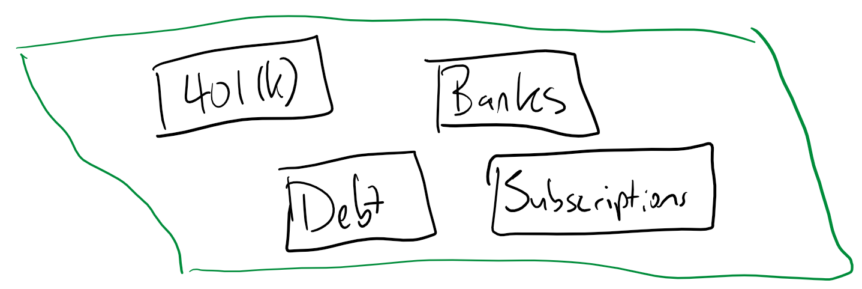“A full layout” is a dreaded phrase for those who have been in the military. It involves being given a packing list for some sort of operation, typically dozens of items long, which must be crammed into a rucksack. From that point, a full layout is the forced process of pulling the contents of the rucksack out and laying them out on the ground in a large assembly area, whereby the sergeant or platoon leader will go through and one-by-one verify that every member of the unit has every single item on the list, after which it can all be packed up again. Condescending as the whole exercise feels every time it happens, it also goes without saying that several people will have missed, lost, or forgotten items on the list. In spite of it feeling like a total waste of time, this ritual of preparation and verification inevitably prevents some form of problem in the future.
So why am I sharing this fairly boring army story with you today? Because now is a good time for you to do a full layout. With social distancing and self-isolation being all the rage today, it behooves everyone to make their “extra” time more productive, since the duration of the process could extend for several weeks or even months at this point. Here are some financial full layouts you can perform to ensure you’re not missing anything you could be taking advantage of.
Evaluate Your Bank
Studies have shown that the most common reasons someone has an account at a bank or credit union fall into one of a few camps: “It’s where my parents bank” “It’s the closest bank to my home” “It was the bank I got my first credit card through”, which are all forms of psychological inertia at work. An option was made the default at the time you needed to make the decision, or the decision was made for you. In any case, this often translates to having a bank that’s not tailored to our needs. For example, many people never physically go to a branch and rarely use ATMs. For these people, a large national bank with multiple branches in every city is a terrible match, yet those large national banks have the majority of the accounts in the United States! For someone who doesn’t make use of the physical branches, an online bank such as Simple or Ally makes significantly more sense, as they’ll reimburse ATM fees when an ATM is needed, and often pay significantly higher interest rates on checking and savings accounts than traditional brick and mortar banks. On the other hand, you might run a small business and have irregular cash flow, where having access to lines of credit and additional banking services makes sense for you. If that’s the case, then working with a regional bank where you actually know your banker on a first name basis can be helpful, since they’ll have a better understanding of your situation and needs. In either case, don’t let your money sit in checking accounts that pay no interest and savings accounts that pay less than 1%. Inflation is eating away at your money at a rate of about 2.5% annually, so you want to ensure that your money is put to work so you don’t lose the value you’ve earned.
Refinance Your Debt
With the Federal Reserve dropping the targeted interest rate to 0%-.25%, mortgage rates and other lines of credit have lowered in cost significantly. As of this writing, mortgage rates are available in a range between 3.25%-3.65% for high credit borrowers and debt consolidation loans are being made at rates as low as 6%. Evaluating any of your current debts and pursuing a refinance to reduce your current payments can certainly be beneficial, or if cash flow isn’t a concern, reducing the required monthly payments but keeping your payments level can speed up the pay down of debt. A word of caution in this are is student debt, however. The federal government is evaluating multiple debt relief programs for federally issued debt such as Stafford and PLUS loans, which will not apply to privately held loans. If you want to pursue refinances in this area, looking at federal consolidation loans will keep you eligible for the relief programs and still may help lower your cost of debt.
Evaluate Your Subscriptions
A lot of us have monthly recurring payments for a large number of services. Online streaming, gaming, and other subscriptions might help us keep entertained during the social distancing period, but a full layout demands we examine other ongoing expenses. Many people are still paying gym memberships despite the almost national shutdown of recreation facilities. Others are still ordering in new clothes and fashion boxes. It’s critical to evaluate if these bring the same value to you when you can’t use the services or when there’s no need for new workplace fashion. Evaluate these expenditures and if they’re actually bringing substance or enjoyment, or if they’re simply hanging on out of habit.
Rebalance your 401(k) or other Retirement Plans
When you sign up for your retirement plan at work, you often select investments on day one and then many people never look at it again except to check the balance. Most modern retirement plan platforms come with an option to rebalance, which automates the process of buying low and selling high by selling off any positions that have outgrown their original balance (i.e. 10% of the whole portfolio has grown to 12% share), which then is put back into the portfolio in positions that have grown less or lost value. During a downturn in the market, this becomes even more important, as the margins between aggressive assets declining in value and conservative assets that preserve value more effectively can grow significantly greater than during normal growth periods. Ensure that your 401(k) is set to rebalance at least annually, and preferably quarterly, to take advantage of this technique.

